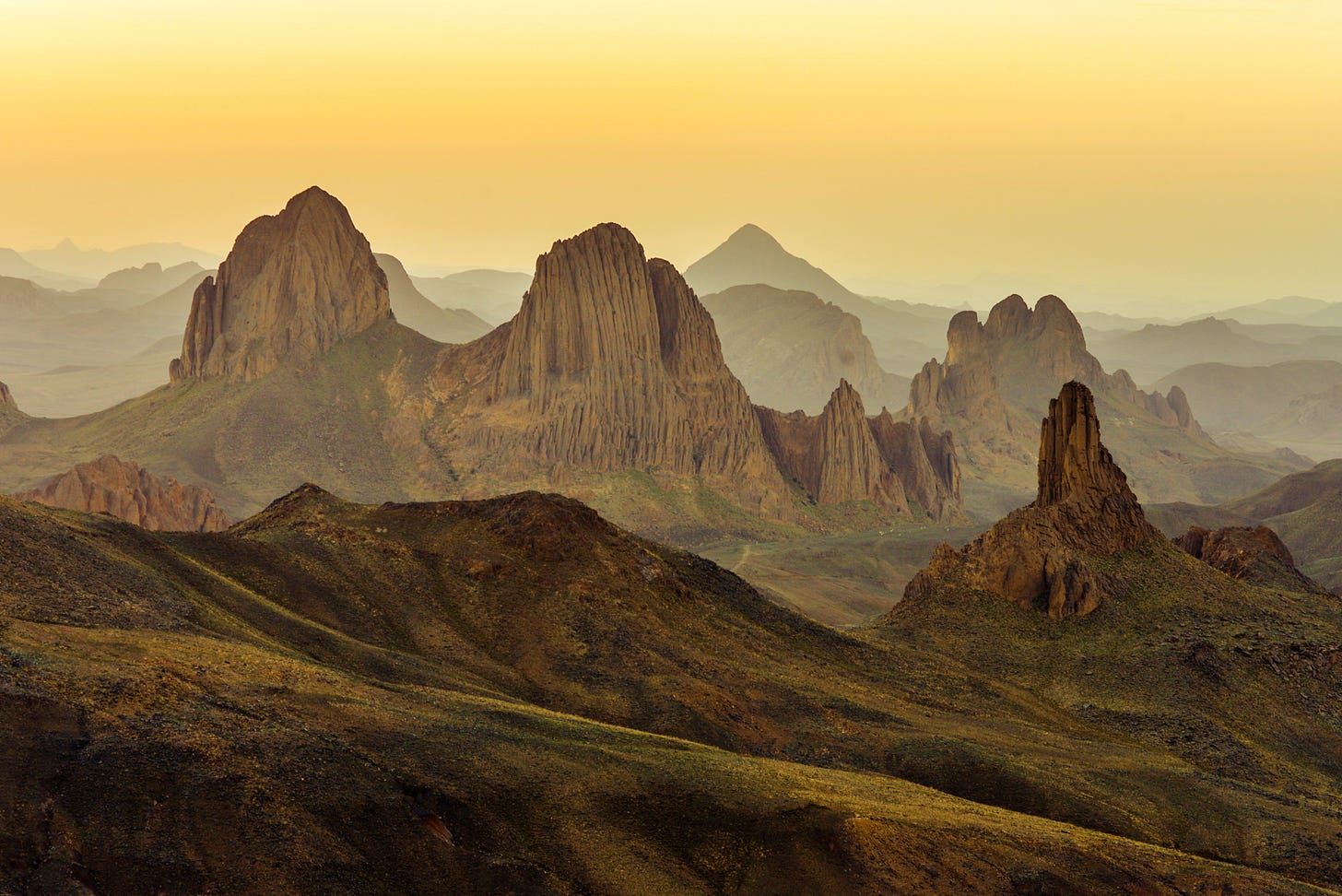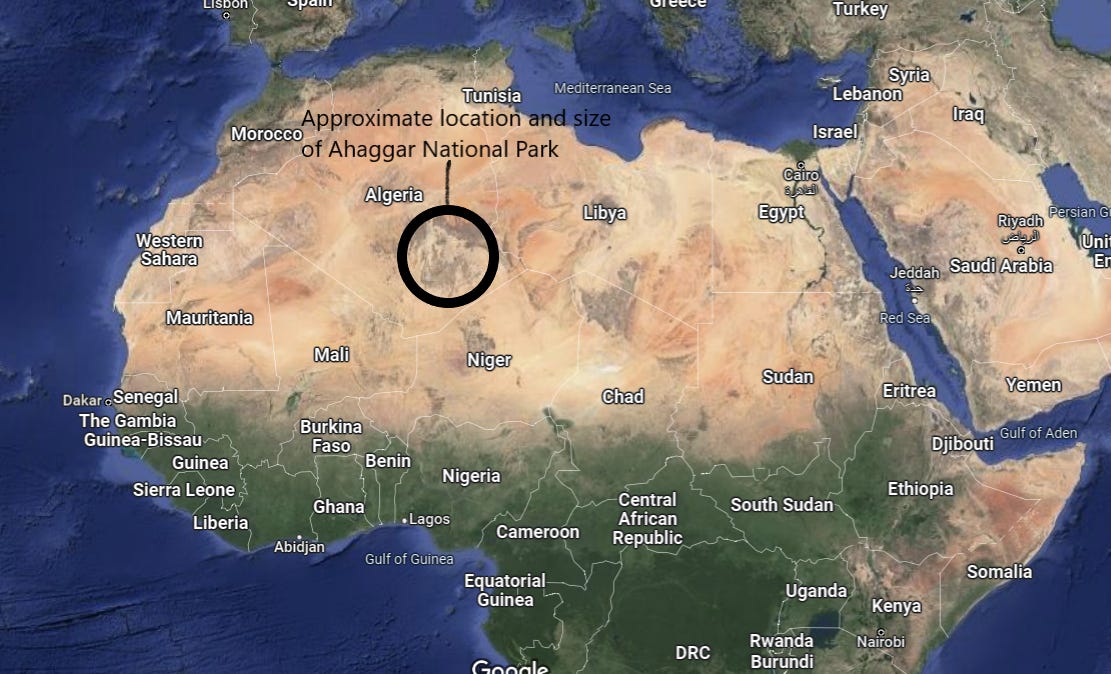An Algerian National Park is Bigger than California and Few Know it Exists
Ahaggar National Park in southern Algeria is an immense region of stark Saharan beauty and remoteness. Few people know it exists. Even fewer have been there.

Below is a map of Northern Africa. That tan region stretching from one African coast to the other is the Sahara Desert. You can almost fit the entirety of the United States within it. Take away Alaska and you would have room to spare. There are few people here — hardy nomadic herders and widely spaced oases villages are swallowed by the immensity of sand and rock stretching across the entire continent.
The black circle represents the approximate location and size of Ahaggar National Park. At over 170,000 square miles (450,000 square kilometers) it is bigger than California making Ahaggar the third largest land-based national park in the world. Only Northeast Greenland National Park, and southern Africa’s Kavango Zambezi Transfrontier Conservation Area, which encompasses parts of five countries, are larger.

Despite its massive size Ahaggar is strangely absent from internet lists of the world’s largest national parks simply because the people writing those lists don’t know about it. Although established in 1987, there is relatively little information available about it, perhaps because virtually nothing is really near it. Look again at that map of Saharan Africa and you’ll notice that the black circle representing the approximate location of Ahaggar is almost smack dab in the middle of the Sahara. The prospect of even getting to its edge is no small undertaking. I couldn’t even find an accurate map of the park’s borders anywhere online.
But this park does exist and the relatively few images you can find of it show a strikingly rugged and beautiful desert landscape featuring soaring volcanic cliffs, rock arches, and other strange stone formations rising above a red-orange sandscape.
This mountainous area has a slightly less extreme climate compared to other parts of the central Sahara, providing just enough sustenance for a surprising variety of animal species, including a small population of desert cheetah.
The park’s highest point is Mount Tahat, rising to a surprisingly impressive height of almost 10,000 feet in elevation. Certainly, people have reached its summit, but perhaps not every year. I could find no trip reports of such a climb. North of Mount Tahat there is said to be a cave with 10,000 year-old cave paintings depicting a southern Sahara pastoral life of animal husbandry.
Another interesting site within this massive park is a Roman era tomb where you may personally observe the preserved body of one Tin Hinan. Even Indiana Jones would be impressed by anyone completing a venture to the tomb of Tin Hinan, and who knows what sorcery abounds there?
Want to go? You need a lot of time, money, and cajones. You’ll need to make your way to the oasis town of Tamanrasset in southern Algeria. A quick check on Kayak.com for the fastest route from Denver pulled up a 40-hour trip with three stops, but that one was almost $12,000. The cheapest option was a few hours longer and just under $7,000. Perhaps there are much cheaper ways to get there if you can spare a week and hire an armed guide to drive you overland from points farther north or south.
There aren’t many places on the planet as remote as this outside of the polar regions. There will be no “instafamous” photo lookouts or tourist souvenir shops. But you could be assured of probably the most brilliant night sky on the planet, rock pinnacles and peaks to yourself, and a true sense of exploration to be found in few other places in the world.


